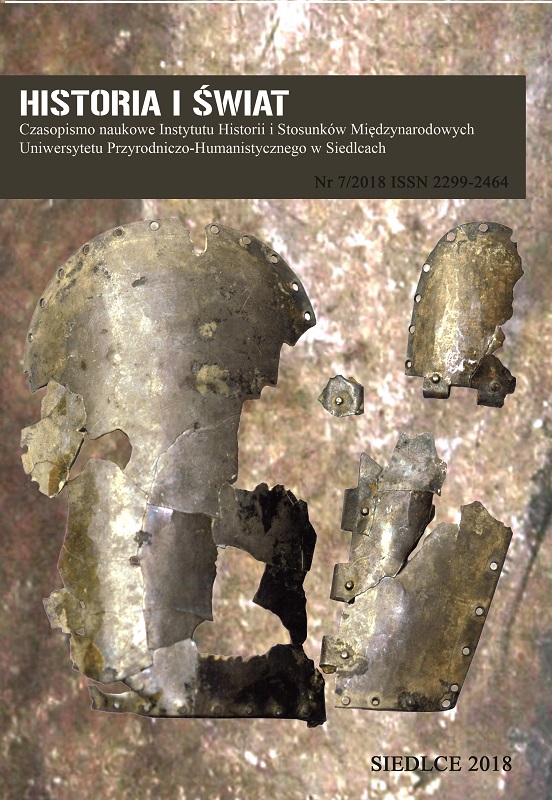The protection of the cordon section on the border between Central Lithuania and the so-called Kaunas Lithuania between 1921-1923
DOI:
https://doi.org/10.34739/his.2018.07.19Słowa kluczowe:
the Command of the Cordon Section, staging troops, internal security, Central Lithuania (Middle Lithuania)Abstrakt
The above-mentioned document examines the period when the borders between Poland and its neighbours were not definitely fixed. It discusses mistakes made by the services on the Polish-Lithuanian border. It describes the way military groups were used on the border: Uhlans, a type of lancer cavalry, were forced to patrol the border as military policemen or border guards, which dissatisfied them as cavalrymen. The same service was performed by front-line units. For cavalry an additional barrier was its esprit de corps and ancient traditions. Serving on the border together with infantry, or even rear-guard troops was a discredit to them. At that time, the only formation properly prepared for the cordon service were staging battalions, consisting of soldiers of rear-guard formations, often more mature, who had been unfit for the front-line service during the Polish-Russian war. In the first years of independence the soldiers performed their service in difficult conditions, often living in squalor. The document discusses geographical conditions and their influence on securing the border, i.e. they facilitated contraband smuggling. The straits between the lakes were patrolled by guards, but in winter smugglers could cross the frozen lakes. To protect the cordon area a system of patrols was created, which could be avoided easily, however, as the guards were responsible only for the places they were patrolling, not the whole cordon area. Then, the document outlines the unstable situation on the shifting borders of the Republic of Poland after regaining independence, and their ineffective protection. On the 100-year anniversary of Polish independence, it should be recalled that it was only in 1923 when Polish borders took on their final form.
Pobrania
Pobrania
Opublikowane
Numer
Dział
Licencja
Prawa autorskie (c) 2018 Historia i Świat

Utwór dostępny jest na licencji Creative Commons Uznanie autorstwa – Bez utworów zależnych 4.0 Międzynarodowe.




